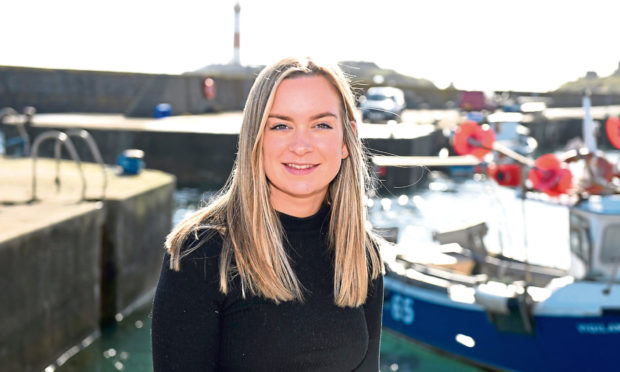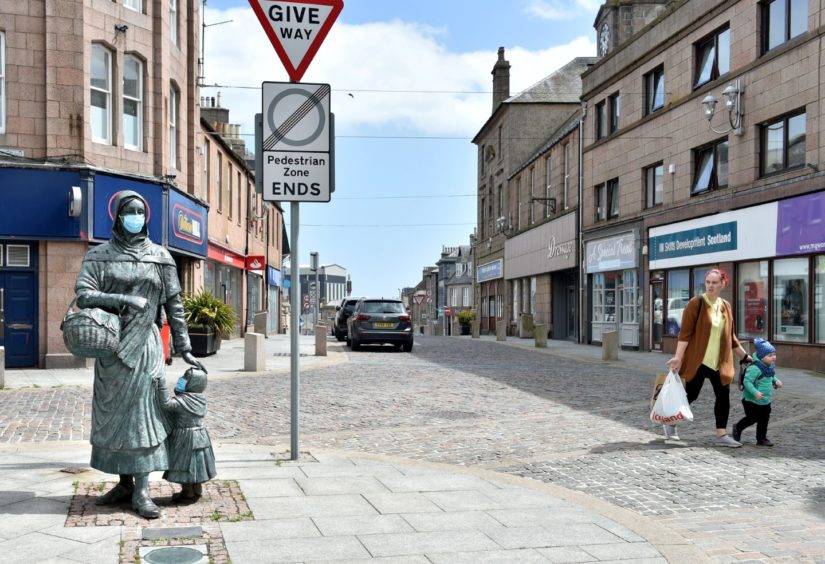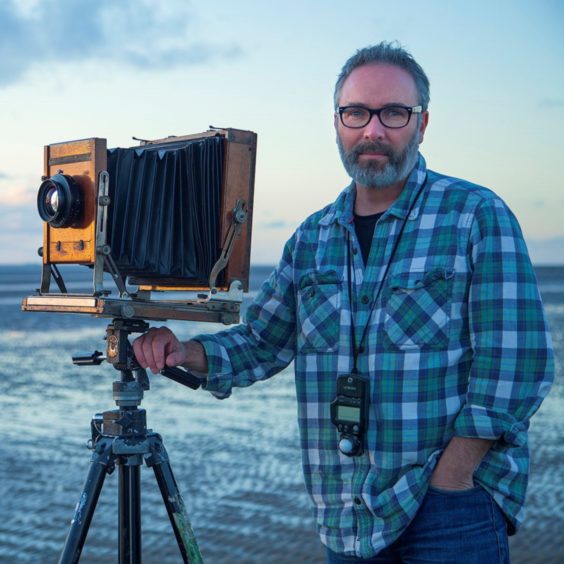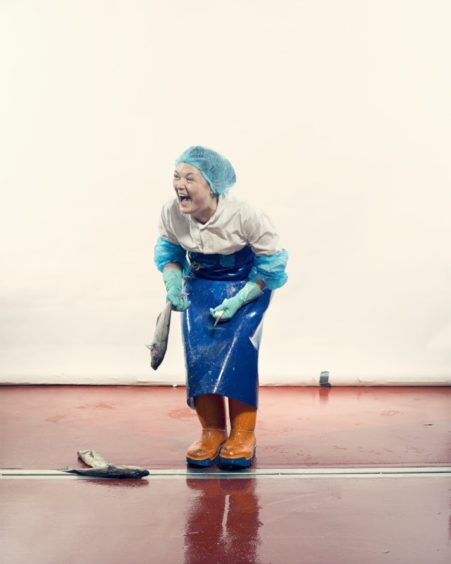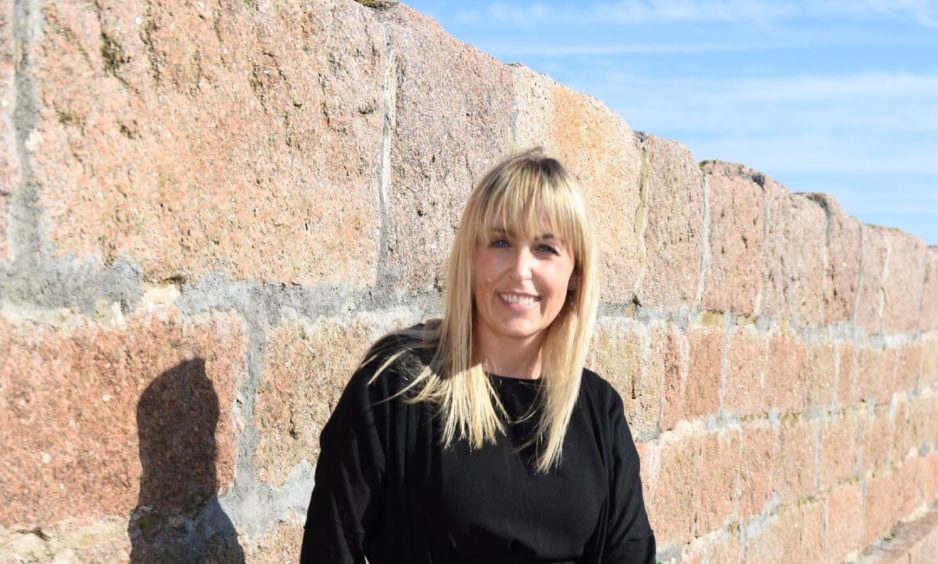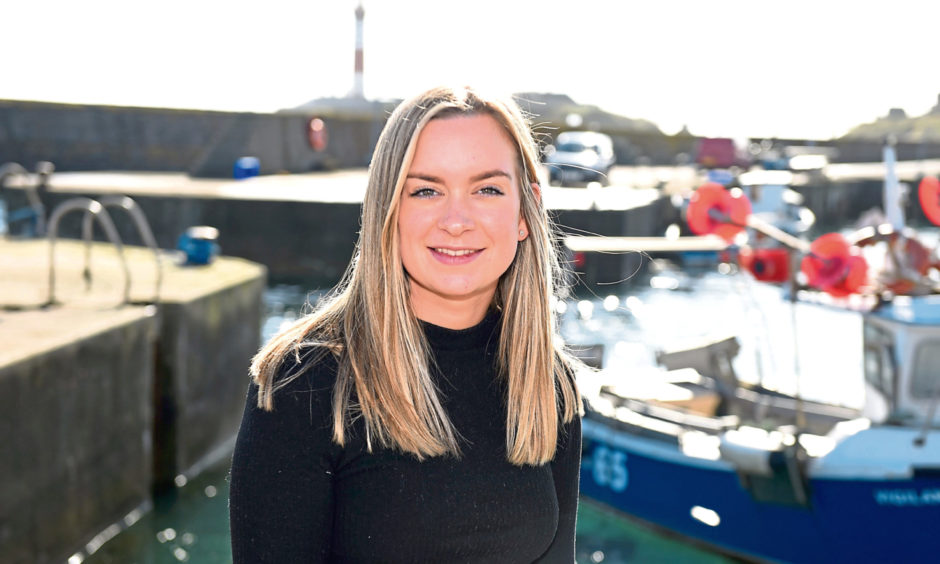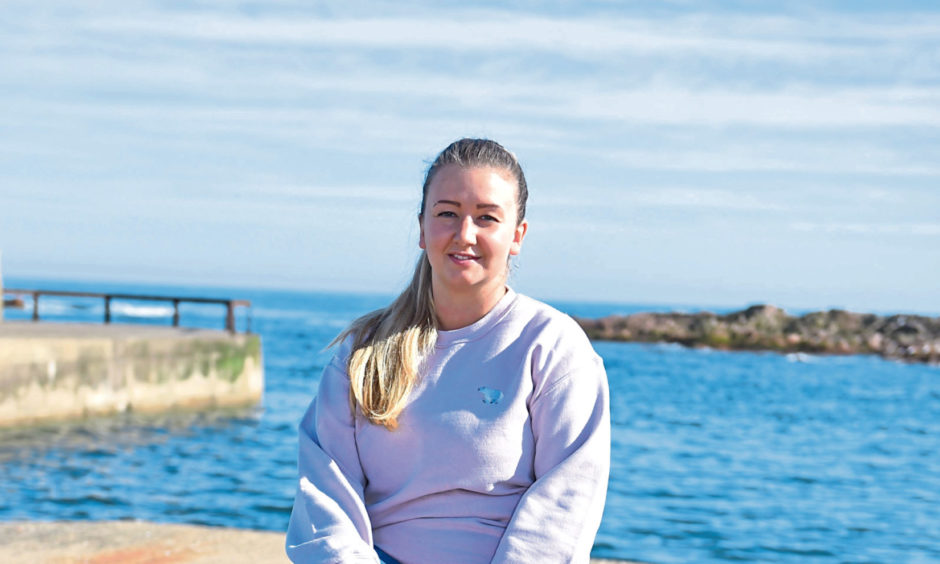It’s a clear, crisp day in Boddam, the kind that makes you want to soak up the last dregs of warmth before winter creeps in.
A lone fisherman is perched on the harbour, his line cast into the brilliant blue of the sea.
Generations have made a living from the water at Peterhead, which is still home to the trade today.
As the figure continues to wait patiently, a steady succession of lorries rumbles past.
They tell of a drastically changed industry, where fish is shipped worldwide rather than sold door to door.
Ironically, you might miss the sprawling factory, which is Thistle Seafoods, as it is tucked away off a sharp bend overlooking the harbour front.
The business, which has been on the go for almost 70 years, is one of the largest family-owned manufacturers of seafood in Europe.
With three large open halls, dozens of people work the lines – with 150 products sent to supermarkets around the world.
There are a variety of roles available, and you don’t need to be elbow deep in fish guts to join the industry.
The gutting quines followed the herring fleet from Orkney to Yarmouth, while wives and mothers baited lines, mended nets and walked miles to sell the catch – all in the knowledge that the sea could make them a fishing widow at any time.
The role that women played in fishing is celebrated through Fisher Jessie, a sculpture of a woman and child which can be found on Marischal Street in Peterhead town centre.
As the industry changed and wooden barrels were no longer filled with fish and salt, the role that women played also altered.
Once very public figures, their work now takes place behind closed doors in modern factories.
Award-winning photographer Craig Easton is determined that women in the fishing industry both past and present will continue to be respected, with stories told and retold for the next generation.
His book, Fisherwomen, is a series of portraits which were shot over seven years, with women in the fishing industry photographed from Shetland to Great Yarmouth.
The powerful images offer a glimpse of a world now rarely seen.
your life spoke with Craig and found out more about his experience, before meeting with women who work in the fishing industry today.
Craig Easton
Craig believes the herring lassies were a “unique phenomenon” in the history of British women at work.
He started taking pictures of women in the fishing industry in 2013, although it was a further four years before he knew their stories needed to be told.
Craig followed the route which the herring girls would have taken, and was able to capture striking portraits along the way.
“We’re talking about a band of female-only migratory workers, who from 1860 onward left their families behind to follow the Scottish herring fleets – to gut, salt and pickle the catch,” said Craig.
“The work was tough, the salt ate into their fingers and they worked long hours in uncovered, unpaved yards surrounded by fish guts.
“As workers they were fiercely respected, and the women valued their independence.”
Craig opted to first take pictures in Aberdeen, before travelling to Fraserburgh and Peterhead.
“Everybody once knew these women as characters, but who is doing that work now?” he said.
“Well, the answer is that women are still doing that work, but behind closed doors in factories and packing houses.
“I wanted to turn the light back on these women, because they inspired us so much in the past and still deserve to be celebrated.
“I’m a great believer in telling stories and knocking on doors, but how do you get into communities?
“As long as you’re open, honest and curious, people will want to talk to you. What people really need is a damn good listening to.”
Craig hoped to find characters who had once dominated the quays, with their gossip and fierce loyalty to one another.
He was not disappointed, despite finding himself the subject of good-natured jokes.
“As a bloke going into a factory full of women, I was definitely ripped,” continued Craig.
“The phrase ‘screech like a fishwife’ comes from the idea that there were these characters who hollered on the quayside.
“The atmosphere lives on, women still sing on the production lines.”
Craig also interviewed women who had originally worked in the fishing industry during the 1940s and ’50s.
He discovered that those working in fishing today were unaware of the communities upon which the trade was founded.
“I met older women and they fell about laughing at the health and safety kit of today,” said Craig.
“How different it was for them, working outdoors and elbow deep in fish guts.
“The fishing communities could be matriarchal in that women did everything while the men were at sea.
“I found that some of the younger women of today didn’t necessarily know this story.
“It’s a terrible thing that we stopped telling their stories, and I felt the stories in general needed updating.
“We need to connect the contemporary experience to the history – it’s important to have these pictures to look back on.
“What we take pictures of now will be the historical photographs of tomorrow.
“You can’t leave it to people with Instagram accounts and iPhones.
“There used to be these enormous portraits of the great and the good; I photograph ordinary people.
“I want to show an enormous respect to these women.”
Louise Hutchins
Louise was one such woman who was photographed by Craig, when she worked as a filleter at Nolan Seafoods in Aberdeen.
She was pictured aged 19, beaming with laughter on the factory floor.
It is perhaps no surprise that she entered the trade, as her father is a fishmonger.
Now 26 and a stay-at-home mum, Louise believes she would return to the industry in the future.
“Filleting is a skill that you have to learn, and you can make money once you find a rhythm,” she said.
“I got paid for what I cut, so if you got your head down you could make your wage in a couple of hours.
“You don’t actually cut into the stomach and you’re wearing protective clothing.
“Sometimes you would get fish scales on you, but they easily wash off.”
Louise believes that you need a thick skin to work in the industry, however.
“It was banter, but women held their own,” she said.
“There were more women than men on the tables where I worked, and I think a woman can do any job in the industry.”
Pamela Macdougall
Pamela Macdougall is a far cry from the traditional image of a fisherwoman, and she is hopeful of breaking down stereotypes in the industry.
With neatly styled blonde hair and subtle make-up, it’s difficult to imagine her with a fillet knife in hand.
While Pamela may not get her hands dirty, she is still every bit a part of the fishing industry today.
She is now fifth generation at Thistle Seafoods, and is incredibly proud of the company.
The former forensic psychologist helps oversee 550 workers, with products supplied to supermarkets in the UK, Europe, Canada and Australia.
“When we advertise positions, I think people automatically think they will be filleting fish,” said Pamela.
“But that’s not the case at all, there are so many different jobs that people can do.
“From product development to working with our buyers, it never stops here.”
There’s certainly a buzz around the factory, complete with a constant stream of deliveries.
“Most people don’t really know we exist, because we produce supermarket own-brand products,” said Pamela.
“I grew up in the fishing industry, with my dad being involved in it throughout his entire life.
“When it was announced that Peterhead Prison was closing, I took the opportunity to change my career and I went back to university and completed my MSc in Human Resource Management.
“When I graduated, I was lucky enough that there was an HR vacancy at Thistle and my brother, Ryan Scatterty, managing director, asked me to join the family business.
“During the school summer holidays Ryan used to work on the lines, and I worked on reception, so we’ve always been involved in the company to some extent.
“I think the thing I love about the industry is the passion which it attracts. Those that work in this industry thrive on the daily challenges and the fast-paced nature of it.
“It’s a lot more exciting now than what it used to be, and this is partly due to the innovations in product development and the opportunities that have arisen through the modernisation of parts of the industry.
“That in turn has got people more interested, and I think a drive towards healthy eating has also helped.
“The primary element of the industry, such as working on the fishing boats, is still very male oriented. I don’t think women see that side of it as a viable career option. However, within the processing side of the industry, there is a variety of opportunities.
“We have departments that people wouldn’t even think we have. For example, we have a new production development kitchen and a laboratory on site.
“I honestly love my job, and the challenges that each day brings.”
Venetia Rogers
Venetia Rogers had no idea she would come to work at Thistle Seafoods when she studied nutrition at Robert Gordon University in Aberdeen.
The 24-year-old, who is originally from Fyvie, commutes from the Granite City to Boddam each day in her role as technical account manager.
A self-confessed foodie, no one in Venetia’s family was in the fishing industry.
“I did my placement here and fell in love with the food industry,” said Venetia.
“I still get a little thrill when I spot one of our products on the supermarket shelves.
“I don’t think there is much promotion or recognition of the roles available in the industry though. When people think fishing, they just think of the boats – people have no idea as to what goes on behind the scenes to produce one of our products.”
A 9am taste testing might not be everyone’s cup of tea, but it makes sure the team have sampled the products before they are sent worldwide.
“There is a lot of diversity in our products. You can be producing fishcakes on one line and prawns on the next, it’s very fast-paced,” said Venetia.
“Lots of women work on the lines here, but they also work in engineering, technical, commercial, finance, HR and buying.
“So much goes into creating a product, right down to the packaging.
“And although the production lines are pretty noisy with all the equipment, some processes are still done manually. Salmon en croute, for example, would be done mainly by hand.
“There isn’t a strong fish smell here, that’s another misconception. In fact, the only time there’s any kind of smell in the air is when we do fish in beer batter.”
Carla Becci
Carla grew up in Peterhead, and was always aware of the fishing industry.
The engineering stores co-ordinator never saw herself ordering machine parts, having previously worked as a legal secretary.
“I’m 27 now and I’ve been with Thistle Seafoods for five years,” said Carla.
“I started on reception and would see the engineering invoices coming through for parts with weird and wonderful names.
“Curiosity got the better of me, and I asked what roles might be available.”
There are more than 50 people in the engineering team, and Carla is relied upon to order spare parts and keep track of repairs.
“When people think of fishing, the initial thought is of the fishermen out catching the fish,” said Carla.
“It’s not until you get involved in other areas of the industry that you realise the wide range of teams and roles that are required to get the food to the supermarket shelves.
“I hope more women continue to get involved in all areas of the industry.”
Fisherwomen by Craig Easton is available at www.tenoclockbooks.com
